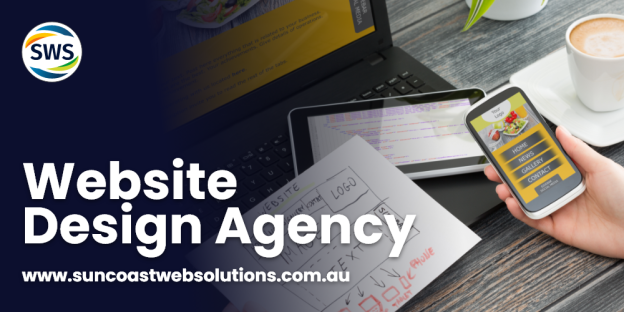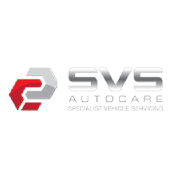10 Landing Page Design Tips to Skyrocket Your Sales

 19th Sep, 2024
19th Sep, 2024
Landing pages are crucial in digital marketing. They turn casual visitors into interested leads or paying customers. A well-designed landing page, like those offered in professional web design services, can greatly increase your conversion rates and improve your sales performance.
Why is this important? Your landing page is the first impression for potential clients. A good design not only catches their attention but also directs them to take specific actions, such as signing up for a newsletter, downloading a resource, or making a purchase.
This article offers 10 practical tips on creating an engaging and high-converting landing page. These tips include setting clear goals and continuously optimizing your design to maximize its effectiveness.
1. Define Your Goal
Setting clear objectives for your landing page is crucial. Without a defined purpose, you risk creating a page that fails to convert visitors effectively.
Common Goals for Landing Pages:
- Lead Generation: Capturing visitor information to build your email list or sales pipeline.
- Product Promotion: Highlighting the features and benefits of a specific product to drive sales.
- Event Registration: Encouraging visitors to sign up for webinars, conferences, or other events.
- Content Download: Offering valuable content like eBooks or whitepapers in exchange for contact details.
By clearly identifying your landing page purpose, you can tailor every element—from headlines to CTAs—to align with your conversion goals. This focused approach maximizes the chances of achieving your desired outcomes.
2. Know Your Audience
Understanding your target audience is essential for creating a landing page that resonates with visitors and drives conversions. Recognizing their needs and preferences allows you to tailor your messaging, design, and offers to meet their expectations.
Techniques for researching your audience include:
- Surveys: Conducting surveys helps you gather direct feedback from potential customers. Tools like SurveyMonkey or Google Forms can be used to ask questions about preferences, challenges, and expectations. This market research guide provides valuable insights into how to conduct effective surveys.
- Analytics: Utilize analytics tools such as Google Analytics to gain insights into user behavior. Track metrics like demographics, interests, and on-site behavior to understand what attracts and retains visitors.
Creating a detailed user persona based on this data can guide your content strategy and design decisions. This persona represents your ideal customer, including their demographics, goals, pain points, and buying behavior. For more information on how to create effective user personas, check out this resource. Tailoring your landing page to this persona ensures that the content is relevant and engaging, ultimately enhancing the likelihood of conversion.
3. Craft Compelling Headlines
Effective headlines play a crucial role in grabbing the attention of visitors. They are usually the first thing that visitors see, and they decide whether to stay or leave based on that.
Characteristics of compelling headlines:
- Clarity: A headline should clearly state what the page is about. Avoid using jargon or overly complex language.
- Benefit-focused: Highlight the value or benefit your audience will receive. For example, instead of saying “Our Product Features,” use “How Our Product Solves Your Problem.”
A/B Testing different headlines can help you find out which version resonates most with your audience. Use this data to continuously improve your approach.
Examples of Effective Headlines:
- “Unlock Your Full Potential with Our Training Program”
- “Save Time and Money with Our Innovative Solution”
Creating an engaging headline requires understanding how to create a landing page that speaks directly to your audience’s needs and desires.
4. Write Concise and Persuasive Copy
Concise messaging on landing pages is crucial for holding visitor attention. Lengthy text can overwhelm and dissuade potential customers, leading to higher bounce rates.
Strategies for writing persuasive copy:
- Benefit-driven language: Focus on the advantages your product or service offers. For instance, instead of saying “Our software has many features,” you might say, “Our software boosts your productivity by 50%.”
- Bullet points: These break down information into digestible chunks, making it easier for readers to scan and understand quickly. Highlight key benefits or features in bullet points to enhance readability.
Example:
- Increase your sales by 30%
- Save 10 hours a week with automation
- Easy setup and integration
Persuasive writing is about clearly conveying value and making it easy for visitors to recognize the benefits of taking action.
5. Design for Simplicity
A minimalist design enhances the user experience by reducing distractions and focusing attention on key elements. A clutter-free layout makes it easier for visitors to navigate and understand your message quickly.
Benefits of a clutter-free landing page layout:
- Improved readability
- Faster loading times
- Enhanced focus on the call-to-action (CTA)
Key elements to include:
- Clear CTA: Your main objective should be prominently displayed.
- Essential information: Only include content that directly supports your goal.
Elements to exclude:
- Navigation links: These can lead visitors away from your landing page.
- Excessive text or images: Too much content can overwhelm and distract users.
By prioritizing simplicity, you create a seamless path for visitors to follow, improving their chances of converting.
6. Use Strong Visuals
Visual content plays a critical role in conveying messages effectively on your landing page. High-quality images and videos can grab attention, illustrate your points, and make your offer more appealing. In fact, visual content is essential in a marketing strategy, as it significantly enhances user engagement and retention.
Types of Visuals that Engage Users
- Images: Use professional, high-resolution images that resonate with your audience. These can include product photos, customer testimonials, or lifestyle shots that align with your brand.
- Videos: Incorporate engaging videos that explain your product or service. A short, well-produced video can often communicate complex information more clearly than text alone.
When learning how to create a landing page, prioritize strong visuals not only to enhance user experience but also to drive conversions. Remember, the role of visual content in marketing is paramount; therefore, leveraging it effectively can lead to substantial improvements in your overall marketing performance.
7. Optimize Your Call-To-Action (CTA)
Optimizing your Call-To-Action (CTA) is crucial for converting visitors into leads or customers. An effective CTA should be clear and prominent, guiding users towards the desired action effortlessly.
Characteristics of an Effective CTA
- Clarity: Your CTA should communicate exactly what the user will get by clicking it. Ambiguity can lead to hesitation.
- Prominence: Ensure that your CTA stands out on the page. It should be one of the first elements that catch the visitor’s eye.
Strategies for Making CTAs Stand Out
- Color Contrast: Use contrasting colors to make your CTA pop against the background. For instance, a bright orange button on a blue background can draw immediate attention.
- Placement: Position your CTA in a highly visible area, ideally above-the-fold where users don’t have to scroll down to see it.
- Action-Oriented Text: Use verbs that incite action like “Get Started,” “Download Now,” or “Sign Up Today.”
Example: A landing page with a well-designed CTA featuring bold text, a contrasting color scheme, and strategic placement can significantly increase click-through rates.
By focusing on these aspects, you ensure that your CTAs are not just visible but also compelling enough to drive conversions.
8. Focus on Above-the-Fold Content
The Above-the-Fold Strategy is important for user engagement and web design. It refers to the part of your landing page that is visible without scrolling. By placing important elements above the fold, you ensure they are immediately seen, which can greatly influence conversion rates.
Key elements to include above the fold:
- Headline: Your headline should be clear and focused on benefits, instantly conveying what you offer.
- Call-To-Action (CTA): Position your primary CTA prominently to encourage immediate action from visitors.
Using an above-the-fold strategy helps capture attention quickly, maximizing the chances of engaging users right from the start.
9. Ensure Mobile Responsiveness
The increase in mobile web traffic is undeniable. Recent statistics show that over 50% of global web traffic comes from mobile devices. This shift has significant implications for landing page design choices, making it crucial to prioritize mobile-friendly design.
Features that make a landing page mobile-responsive:
- Flexible Layouts: Using responsive layout techniques ensures your landing page adapts to various screen sizes seamlessly. Implement CSS media queries to adjust elements dynamically based on the device’s viewport.
- Touch-Friendly Buttons: Design buttons that are easily tappable on smaller screens. Aim for a button size of at least 44×44 pixels to accommodate touch interactions effectively.
- Optimized Images: Compress images for faster loading times without compromising quality. Use responsive image techniques like
srcsetto serve appropriately sized images based on the device. - Simplified Navigation: Minimize navigation links and use a clean, uncluttered layout to enhance user experience on mobile devices.
Ensuring your landing page is optimized for mobile users enhances accessibility and user experience, ultimately driving higher conversion rates across all devices.
10. Test and Optimize Continuously
Continuous improvement is key to maintaining an effective landing page. Regularly testing different elements can lead to significant performance enhancements.
Importance of Ongoing Testing
Implement A/B testing to compare two variations of a webpage element. This helps identify which version performs better in converting visitors.
Elements to Test
- Experiment with various headlines to see which captures more attention and drives engagement.
- Test different images to determine which visual resonates most with your audience.
- Evaluate the effectiveness of different call-to-action buttons in terms of clarity, prominence, and user interaction.
By continuously refining these elements, you can optimize your landing page for the best possible results.
Conclusion
Achieving landing page success is an ongoing process. Continuous optimization is crucial for adapting to changing user behaviors and market trends. By regularly testing and refining elements such as headlines, visuals, and CTAs, you ensure that your landing page remains effective in converting visitors.
Implementing the tips outlined in this guide can significantly boost your sales. Start by clearly defining your goal and understanding your audience’s needs. Craft compelling headlines, write concise copy, and design a clutter-free layout. Use strong visuals and make your CTA stand out. Prioritize above-the-fold content and ensure mobile responsiveness.
How to create a landing page that converts involves these steps:
- Define Your Goal
- Know Your Audience
- Craft Compelling Headlines
- Write Concise and Persuasive Copy
- Design for Simplicity
- Use Strong Visuals
- Optimize Your Call-To-Action (CTA)
- Focus on Above-the-Fold Content
- Ensure Mobile Responsiveness
- Test and Optimize Continuously
By following these actionable tips, you’re well on your way to creating a high-converting landing page that drives results. Keep experimenting, analyzing, and adjusting to see continued improvements in your sales performance.
FAQs (Frequently Asked Questions)
What is the importance of landing pages in digital marketing?
Landing pages play a crucial role in digital marketing as they are specifically designed to convert visitors into leads or customers. An effective landing page can significantly boost conversion rates and sales performance, making it essential for any marketing strategy.
How do I define the goal of my landing page?
To define the goal of your landing page, start by establishing clear objectives that align with your overall marketing strategy. Common goals include lead generation and product promotion. Clearly defined goals will guide your design and content decisions.
What techniques can I use to understand my audience better?
Understanding your audience’s needs and preferences is vital for creating effective landing pages. Techniques for researching your audience include conducting surveys, analyzing website analytics, and developing user personas to tailor your content accordingly.
What are key characteristics of compelling headlines?
Compelling headlines are crucial for capturing visitor attention. They should be clear, benefit-focused, and engaging. A/B testing different headlines can help identify which ones resonate best with your audience.
Why is mobile responsiveness important for landing pages?
With a significant amount of web traffic coming from mobile devices, ensuring that your landing page is mobile-responsive is critical. Features such as flexible layouts and touch-friendly buttons enhance user experience and engagement on mobile devices.
How can I continuously optimize my landing page?
Continuous optimization involves regularly testing different elements of your landing page, such as headlines, images, and calls-to-action (CTAs). Implementing A/B testing strategies allows you to make data-driven improvements that enhance performance over time.
we are your one-stop internet marketing solution on the sunshine coast!

 07 5479 3888
07 5479 3888









